University of Erlangen–Nuremberg
Friedrich–Alexander University Erlangen–Nürnberg (German: Friedrich-Alexander-Universität Erlangen-Nürnberg, FAU) is a public research university in the cities of Erlangen and Nuremberg in Bavaria, Germany. The name Friedrich–Alexander comes from the university's first founder Friedrich, Margrave of Brandenburg-Bayreuth, and its benefactor Christian Frederick Charles Alexander, Margrave of Brandenburg-Ansbach.[1]
Friedrich-Alexander-Universität Erlangen-Nürnberg | |
 Friedrich-Alexander University seal | |
| Latin: Universitas Friderici Alexandriae | |
Former names | Friedrich-Alexander-Universität Erlangen |
|---|---|
| Type | Public |
| Established | 1742 (first) 4 November 1743 (moved)[1][2] |
| Budget | € 543.1 million[3][4] |
| Chancellor | Christian Zens[5] |
| President | Joachim Hornegger[5] |
| Vice-president |
|
Academic staff | 4,036[6] |
Administrative staff | 2,320[6] |
| Students | 38,771[7] |
| Location | , , 49°35′52.5″N 11°0′17.17″E |
| Campus | Urban |
| Colors | Blue |
| Affiliations | Domestic: 1. Bavarian State Ministry for Science, Research and Art 2. DFG 3. Excellence Universities International: 1.Top Industrial Managers for Europe 2. SEFI |
| Website | fau.eu |
 | |
FAU is the second largest state university in the state of Bavaria. It has 5 faculties, 24 departments/schools, 25 clinical departments, 21 autonomous departments, 579 professors, 3,457 members of research staff and roughly 14,300 employees.[8]
In winter semester 2018/19 around 38,771 students (including 5,096 foreign students) enrolled in the university in 265 fields of study, with about 2/3 studying at the Erlangen campus and the remaining 1/3 at the Nuremberg campus. These statistics put FAU in the list of top 10 largest universities in Germany.[9] In 2018, 7,390 students graduated from the university and 840 doctorates and 55 post-doctoral theses were registered. Moreover, FAU received 201 million Euro (2018) external funding in the same year, making it one of the strongest third-party funded universities in Germany.[9]
FAU is also a member of DFG (Deutsche Forschungsgemeinschaft) and the Top Industrial Managers for Europe network.
History

The university was founded in 1742, in Bayreuth by Frederick, Margrave of Brandenburg-Bayreuth, and moved to Erlangen in 1743. Christian Frederick Charles Alexander, Margrave of Brandenburg-Ansbach (one of the two namesakes of the institution) provided significant support to the early university. From the beginning, the university was a Protestant institution, but over time it slowly secularized. During the Nazi era, the university was one of the first that had a majority of Nazi supporters in the student council. In 1961, the business college in Nuremberg was merged with the university in Erlangen, so now the combined institution has a physical presence in the two cities. An engineering school was inaugurated in 1966. In 1972, the school of education (normal school) in Nuremberg became part of the university.

Timeline
Below is a short timeline of FAU from its inception to its present form:
- 1700–1704: The Schloss of the Margraves at Erlangen is built.
- 1743: Friedrich, Margrave of Brandenburg-Bayreuth, issues an edict whereby the university recently founded in Bayreuth is transferred to Erlangen. It has the four faculties of Protestant Theology, Jurisprudence, Medicine and Philosophy.
- 1769: The University at Erlangen is given the new name of Friedrich-Alexander-Universität in honour of Alexander, Margrave of Ansbach and Bayreuth.
- 1818: The library of the University of Altdorf, dissolved in 1809, is moved to Erlangen.
- 1824: The first hospital is built.
- 1825: The university moves into the Schloss.
- 1920: The WiSo Faculty (Business Administration, Economics & Social Sciences) is established.
- 1927: Science is taken out of the Faculty of Arts thus creating the new Faculty of Science.
- 1961: The FAU acquires a further faculty through merger with the Nuremberg College of Economics and Social Sciences (founded in 1919). The university's name is now Friedrich-Alexander Universität Erlangen-Nürnberg.
- 1966: The Faculty of Engineering is established. (FAU is thus the first of the traditional universities of the old federal republic to incorporate engineering as an independent faculty.)
- 1972: The Teacher Training College in Nuremberg is incorporated into the Faculty of Education.
- 1993: The FAU celebrates its 250th anniversary.
- 1994: The Free State of Bavaria purchases for the university 4.4 hectares of land in Erlangen previously owned by the US military. The area is now called Röthelheim Campus.
- 2000: The Bavaria-California Technology Centre opens its headquarters at the University of Erlangen-Nürnberg.
- 2000: Inauguration of the Research Centre in Clinical Molecular Biology in Erlangen.
- 2001: Opening of the Röthelheim Campus on the site of the old artillery barracks.
- 2004: Inauguration of the new building at the WiSo Faculty of Business Administration, Economics & Social Sciences in Nuremberg.
Campuses
FAU Busan campus
FAU is the first German university to establish a branch campus in Busan in the Republic of Korea. In November 2009, its campus project received approval from the Korean Ministry of Education, Science and Technology. The FAU Busan Branch Campus offers a Graduate School with a master's degree program in Chemical and Bioengineering and a research center.[10]
In 2014, the university announced its intention of working toward making the Busan-Jinhae Free Economic Zone an educational hub. To this end, FAU Busan works internationally with various companies and universities.[11]
Library
The University Library Erlangen-Nürnberg is the library system of the Friedrich Alexander University and is a regional library for the region of Middle Franconia. As an academic universal library, it offers its users a wide range of specialist literature from all faculties and a variety of services. With approximately 5.4 million volumes, it is Bavaria's largest library outside the state capital Munich. Large parts of the media stock are also accessible in interregional lending. The University Library is a member of the Bibliotheksverbund Bayern (Bavarian library union).
Faculties
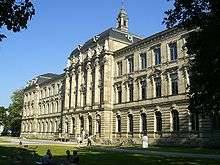
In February 2007, the senate of the university decided upon a restructuring into five faculties.[12] Since October 2007, the FAU consists of:[13]
- Faculty of Humanities, Social Sciences, and Theology
- Faculty of Business, Economics, and Law
- Faculty of Medicine
- Faculty of Sciences
- Faculty of Engineering
The following faculties were part of the university (sorted in the order in which they were founded):
- Theological faculty
- Law faculty
- Medical faculty
- Philosophical faculty I (philosophy, history, and social sciences)
- Philosophical faculty II (languages and literature)
- Science faculty I (mathematics and physics)
- Science faculty II (biology, chemistry, and pharmaceutics)
- Science faculty III (geography, geology/mineralogy/paleontology)
- Business- and social sciences faculty (1961) in Nuremberg
- Technical Faculty (1966)
- Pedagogical faculty (1972) in Nuremberg

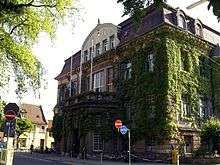
Faculty of Engineering
Inception
In 1962, after lengthy debate, the Bavarian parliament decided to establish a Faculty of Engineering in Erlangen. Then, the University of Erlangen thus won out against the city of Nuremberg, which, for decades, had been demanding the establishment of a college of engineering in Nuremberg. Since the expansive areas of building land required for this project were not available in the center of Erlangen, the foundations for a new university campus were laid in the south east of the town in 1964. The formal establishment of the Faculty of Engineering, then the seventh faculty at the University, took place in 1966. What was unique at the time was that the various engineering departments were subsumed, as a faculty, into the main university rather than constituting an independent university.[1][14]
Present status
The Faculty of Engineering at FAU is a young educational and research institution. Since its foundation in 1966. The Faculty has five departments:
- Electrical, Electronic and Communication Engineering
- Chemical and Biological Engineering
- Materials Science and Engineering (This Department was ranked at 10th best in the world according to the Quantitative Ranking of Engineering Disciplines (QRED).)[15][16]
- Mechanical Engineering
- Computer Science
The Faculty has close connections both with other natural sciences and with traditional subjects at the university. The Faculty of Engineering currently concentrates on the following research fields:
- New Materials and Processes
- Life Science Engineering and Medicine Technology
- Energy Technology and Mobility
- Modeling and Simulation
- Optics and Optical Technologies
- Information- and Communication Technologies
- Micro-/Nano-electronics
Research
Major research areas
FAU claims leadership in a number of research topics. The current eight such major research areas are:[18]
- New Materials and Processes
- Optics and Optical Technologies
- Molecular Life Science and Medicine
- Health Technology
- Electronics, Information and Communication
- Energy, Environment and Climate
- Language - Culture - Region
- Cohesion – Transformation – Innovation in Law and Economics
Excellence initiative
The Excellence Initiative by the German federal and state governments to promote science and research at German universities aims to promote cutting-edge research and to strengthen the higher education and research in Germany to improve its international competitiveness and to make top performers in academia and science visible. As part of this initiative, FAU was awarded the contract for the Erlangen Graduate School in Advanced Optical Technologies (SAOT), which received 1.9 million euros of annual funding for the next five years. The Cluster of Excellence 'Engineering of Advanced Materials and Processes' (EAM) was also established at FAU as part of the initiative and has been approved in the second round. EAM is funded with 40 million euros.[19][20]
Cluster of Excellence 'Engineering of Advanced Materials
The Cluster of Excellence 'Engineering of Advanced Materials – Hierarchical Structure Formation for Functional Devices' (EAM) is the only interdisciplinary research collaboration of its type in Germany to focus on the investigation of functional materials and their processing at all length scales. The main research focus is on the fundamental and applied aspects of designing and creating novel high-performance materials. It is part of the Excellence Initiative of the German Research Foundation.[21][22][23]
Erlangen Graduate School in Advanced Optical Technologies
The Erlangen Graduate School in Advanced Optical Technologies (SAOT) was founded in 2006. SAOT’s scientific focus lies on optics and optical technology, two fields which are considered key technologies of the 21st century. SAOT is currently funded with seven million euros.[24][25]
Research institutions
Central institutions
- Cluster of Excellence 'Engineering of Advanced Materials' (EAM)
- Erlangen Graduate School in Advanced Optical Technologies
- Bavaria California Technology Center (BaCaTeC)
- Central Institute for Research on Teaching and Learning (ZiLL)
- Institute of Advanced Materials and Processes (ZMP)
- Center for Area Studies
- Center for Teacher Education
- Center for Applied Ethics and Science Communication
- FAU Graduate School
- Bavarian Academic Center for Latin America (BayLat)
- FAU Campus Busan
- Central Institute of Healthcare Engineering (ZIMT)
- Center ofor Scientific Computing (ZISC)
- Central Institute for Anthropology of Religion(s) (ZAR)
Interdisciplinary centers
- Interdisciplinary Center for Digital Humanities and Social Sciences
- Interdisciplinary Center for Public Health
- Interdisciplinary Media Research Center
- Interdisciplinary Center for Islamic Religious Studies
- Interdisciplinary Center for Gerontology
- Interdisciplinary Center for Dialects and Language Variation (IZD)
- Interdisciplinary Center Old World
- Interdisciplinary Center for European Medieval and Renaissance Studies (IZEMIR)
- Interdisciplinary Center for Clinical Research (IZKF)
- Interdisciplinary Center Aesthetic Education
- Emmy-Noether Center for lgebra representation theory with emphasis
- Interdisciplinary Center Literature and Contemporary Culture
- Interdisciplinary Center Embedded Systems (ESI Embedded Systems Institute)
- Interdisciplinary Center for ophthalmic Preventive Medicine and Imaging
- Interdisciplinary Center Erlangen Catalysis Resource Center (ECRC)
- Interdisciplinary Center for Science Edition
- Interdisciplinary Center for Neurosciences (IZN)
- Interdisciplinary Center for Research on Lexicography, Valency and Collocation
- Interdisciplinary Center for Interface-Controlled Processes (IC-ICP)
- Erlangen Center of Plant Science (ECROPS)
- Interdisciplinary Center for Molecular Materials
- The Labor and Socio-Economic Research Center (LASER)
- Emil Fischer Center
- Medical Immunology Campus Erlangen (MICE)
- Erlangen Center for Infection Research (ECI)
Research centers and centers of excellence
- Engineering of Advanced Materials (Cluster of Excellence)
- Erlangen Graduate School in Advanced Optical Technologies
- Transfer Centre for Research and Development in Electronic Production (FOWEP)
- Cluster mechatronik & automation
- Bavarian Lasercenter (BLZ)
- Bavarian Center for Applied Energy Research (ZAE Bayern)
- Fraunhofer Institute for Integrated Circuits (IIS)
- Fraunhofer Institute for Integrated Systems and Device Technology (IISB)
- Research Association for Molded Interconnect Devices 3-D MID e.V.
- FAU Ingolstadt Institute
- Department of European Commercial Law
- Interdisciplinary Center for Clinical Research (IZKF)
- Center of Excellence New Materials
Partnerships
FAU is the first German university to establish a branch campus in Busan in the Republic of Korea. FAU has contacts with approximately 500 universities all over the world, including many of the world's top universities like the University of Cambridge, Duke University, UCL, Imperial College London and many more.[29]
Academic ranking
| University rankings | |
|---|---|
| Global – Overall | |
| ARWU World[30] | 151–200 |
| CWTS World[31] | 160 |
| THE World[32] | 162 |
| QS World[33] | 287 |
Global academic rankings of FAU can be seen in the table on the right.
Measured by the number of top managers in the German economy, FAU ranked 25th in 2019.[34]
In 2017, ARWU ranked FAU 4th in Germany in Engineering/Technology and Computer Sciences, 6th in Germany in Clinical Medicine and Pharmacy and 7th in Germany in Natural Sciences and Mathematics.[35]
QS World University Rankings 2018 ranked FAU as the academic institution that has produced the most widely cited publications in Germany (global 21st).[36] 2017, Reuters ranked FAU as the 50th most innovative university globally (2nd Germany, 6th in Europe).[37] In the Reuters ranking report published in 2019, FAU has been rated as the most innovative university in Germany and as the 2nd in Europe. [38]
In Academic Ranking of World Universities for year 2014, FAU ranked second among German universities in Engineering/Technology and Computer Sciences group for all four ranking parameters TOP, FUN, HiCi and PUB.[39][40][41][42]
Awards
Alexander von Humboldt Professorships
In 2010, the newly announced professor of physics and co-director of the Max Planck Institute for the Science of Light, Prof. Vahid Sandoghdar was awarded an Alexander von Humboldt Professorship,[43] Germany’s highest-endowed international research award, endowed with €3.5 million. In the year 2011, the second in a row, FAU communications engineer and researcher Prof. Dr.-Ing Robert Schober (born 1971) was awarded an Alexander von Humboldt Professorship, entailed with €3.5 million,[44][45][46] for an algorithm developed by him which is found in many modern phones today. In 2013, Prof. Oskar Painter received an Alexander von Humboldt Professorship as well. Prof. Painter is another new co-director of the Max Planck Institute for the Science of Light.
German Excellence Initiative
The University of Erlangen-Nürnberg was successful within the German Universities Excellence Initiative in competing for a "cluster of excellence" and a graduate school.[47] The Cluster of Excellence 'Engineering of Advanced Materials' (EAM)" focuses on interdisciplinary developing new materials, joining engineering and natural sciences. The Erlangen Graduate School in Advanced Optical Technologies emphasizes a strong focus in optical and photonics technology in the natural sciences, in engineering and the medical sciences and aims for a concise doctoral education. It is supplemented with a Master's degree program in the same topics.
After an in-depth evaluation, both programs were extended for the third phase of the German Excellence Initiative in 2012 until 2017. They contribute significantly to the research funding of the University, including five new research buildings, permanent new technical facilities and research and teaching staff. They also aim to increase the international perception of the contributing fields of research in Erlangen.
Notable alumni and professors
- Johann Christian Daniel von Schreber (1739–1810), naturalist, studied mammals.
- Samuel Hahnemann (1755–1843), founder of homeopathy
- Alexander von Humboldt (1769–1859), Geographer and Explorer, attended lectures in Chemistry and Physics.[48]
- Friedrich Rückert (1788–1866), orientalist and poet.[48]
- Georg Simon Ohm (1789–1854), physicist, Ohm's law, named after him.
- Justus von Liebig (1803–1873), chemist, "father of the fertilizer industry".
- Ludwig Andreas Feuerbach (1804–1872), philosopher, associated with the Young Hegelians, an atheist.
- Karl von Hegel (1813–1901), historian, father-in-law to Felix Klein and son of the philosopher Hegel
- Felix Klein (1849–1925), Mathematician
- Hermann Emil Fischer (1852–1919), chemist, Nobel Prize in Chemistry 1902
- Eduard Buchner (1860–1917), chemist, Nobel Prize in Chemistry 1907
- Emanuel Lasker (1868–1941), world chess champion, mathematician, philosopher.
- Emmy Noether (1882–1935), mathematician, Noether's theorem, named after her.
- Hans Geiger (1882–1945), physicist, Geiger counter
- Ludwig Erhard (1897–1977), Chancellor of Germany 1963-1966
- Otto Friedrich Ranke (1899–1959), physiologist
- Wolf-Dieter Montag (1924–2018), German physician, and international sports administrator
- Alma Adamkienė (1927–), First Lady of Lithuania 1998-2009
- Harald zur Hausen (1936–), virologist, Nobel Prize in Physiology or Medicine 2008
- Heinrich von Pierer (1941–), former CEO of Siemens AG (1992-2005).
- Karlheinz Brandenburg (1954–), audio engineer, developer of the MP3 audio codec.
- Burkard Polster (1965–), mathematician, host of Mathologer YouTube channel.
- Johanna Narten (1930–2019), historical linguist and first woman member of the Bavarian Academy of Sciences and Humanities
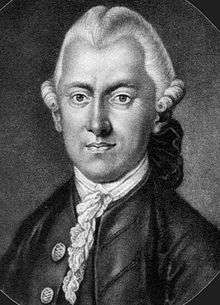
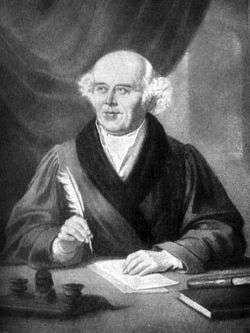

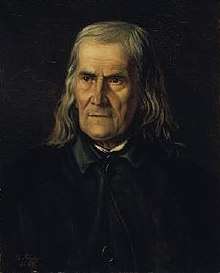
 Georg Simon Ohm
Georg Simon Ohm
 Ludwig Andreas Feuerbach
Ludwig Andreas Feuerbach
 Hermann Emil Fischer
Hermann Emil Fischer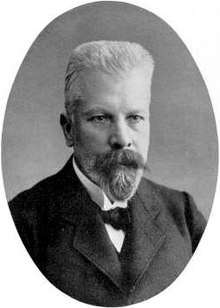


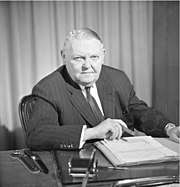


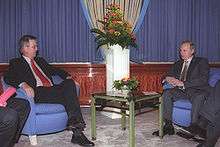
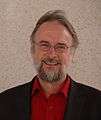
Gallery
 FAU Faculty of Engineering campus
FAU Faculty of Engineering campus- Department of Computer Science
- Department of Electrical, Electronic and Communication Engineering
- Property for good thoughts designed by Marian Bogusz, on the Faculty of Engineering campus
 Faculty of Humanities, Social Sciences, and Theology and central lecture hall
Faculty of Humanities, Social Sciences, and Theology and central lecture hall Regional Computing Centre
Regional Computing Centre
Points of interest
- Botanischer Garten Erlangen, the University's botanical garden
See also
- List of early modern universities in Europe
- Recktenwald Prize
- Top Industrial Managers for Europe
- Fraunhofer Society
- Max Planck Institute for the Science of Light
- Erlangen
- Botanischer Garten Erlangen
- Nuremberg
References
- "Geschichte der FAU". Fau.de. Retrieved 17 August 2019.
- "Our first student". Fau.eu. Retrieved 17 August 2019.
- "Freistaat Bayern Haushaltsplan 2015/2016, Einzelplan 15" (PDF) (in German). Bayerischer Landtag. p. 278. Retrieved 20 June 2017. Public funding: € 365.5 million
- "Entwicklung der Drittmitteleinnahmen der FAU Erlangen - Nürnberg nach Geldgebern 2012 bis 2016" (PDF). University of Erlangen-Nuremberg (in German). Retrieved 20 June 2017. Third party funding: € 177.6 million
- "Die Leitung der FAU". University of Erlangen-Nuremberg. Retrieved 17 August 2019.
- "FAU staff". University of Erlangen-Nuremberg. Retrieved 14 August 2019. University hospital not included.
- "Studierendenzahlen im Wintersemester 2018/2019 (Kopfzahlen)". University of Erlangen-Nuremberg (in German). Retrieved 14 August 2019.
- "Human ressources FAU staff". Retrieved 14 August 2019.
- "FAU Key figures and rankings". fau.de. Retrieved 14 August 2019.
- "Welcome to FAU Busan Campus - German University in Korea". Fau-busan.ac.kr. 13 May 2011. Retrieved 26 February 2017.
- "[Weekender] German university epitomizes educational hub vison". Koreaherald.com. 20 June 2014. Retrieved 26 February 2017.
- "Die Universität stellt sich neu auf". Friedrich-Alexander-Universität Erlangen-Nürnberg. 7 February 2007. Retrieved 10 September 2013.
- "Uni Erlangen Faculties". FAU. Retrieved 27 January 2012.
- "Uni Erlangen Faculty of Engineering". Erlangen University. Archived from the original on 4 October 2013. Retrieved 3 October 2013.
- "Ranking - QRED - EPFL". 6 January 2015. Retrieved 4 July 2015.
- "FAU materials scientists top ten worldwide". Archived from the original on 11 November 2012.
- "Research › FAU.EU". Uni-erlangen.org. Retrieved 26 February 2017.
- "Major research areas at FAU › FAU.EU". Uni-erlangen.org. Archived from the original on 3 July 2014. Retrieved 26 February 2017.
- "Exzellenzinitiative › FAU.DE". Uni-erlangen.de. Retrieved 26 February 2017.
- "Cluster of Excellence Engineering of Advanced Materials (EAM) - Home". EAM. Retrieved 26 February 2017.
- "Graduate School of Advanced Optical Technology | Excellence Initiative". web.archive.org. 23 January 2009.
- "Startseite". Aot.uni-erlangen.de. Retrieved 26 February 2017.
- "Study". Retrieved 4 July 2015.
- "Academic Ranking of World Universities 2017". 11 December 2017.
- "CWTS Leiden Ranking 2017". 11 December 2017.
- "World University Rankings 2018". 11 December 2017.
- "QS World University Rankings 2018". 5 June 2017.
- "An diesen Unis haben die DAX-Vorstände studiert | charly.education". www.charly.education (in German). Retrieved 19 October 2019.
- "ARWU University of Erlangen-Nuremberg". 11 December 2017.
- "FAU publications again the most widely cited in Germany". 13 June 2017.
- "Top 100 most innovative universities in the world 2017". 29 September 2017.
- "Reuters Top 100: Europe's Most Innovative Universities 2019 announced". Reuters. 30 April 2019.
- "University of Erlangen-Nuremberg | Academic Ranking of World Universities - 2016 | Shanghai Ranking - 2016". Shanghai Ranking. Retrieved 26 February 2017.
- "Rankings ›". Fau.de. Retrieved 26 February 2017.
- "FAU Among Global Leaders in Chemistry and Engineering". Archived from the original on 2 September 2014. Retrieved 1 September 2014.
- "Academic Ranking of World Universities in Engineering/Technology and Computer Sciences - 2014 - 2014 Top 100 Universities in Natural Sciences and Mathematics - ARWU-FIELD 2014". Retrieved 4 July 2015.
- "Alexander von Humboldt-Foundation - AHP Preisträger 2010". Retrieved 4 July 2015.
- "Alexander von Humboldt-Foundation - AHP Preisträger 2011". Retrieved 4 July 2015.
- "Newsletter Archive". Retrieved 4 July 2015.
- Redaktion: Referat LS 4 - Öffentlichkeitsarbeit, Internet (14 May 2013). "Excellence Initiative for Cutting-Edge Research at Institutions of Higher Education". Archived from the original on 29 June 2015. Retrieved 4 July 2015.
- "FAU: Information for Alumni - People and stories". web.archive.org. 25 October 2011.
External links
| Wikimedia Commons has media related to Friedrich-Alexander-Universität Erlangen-Nürnberg. |